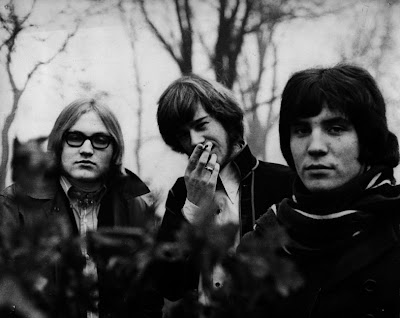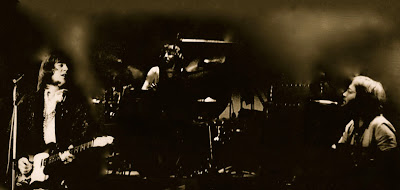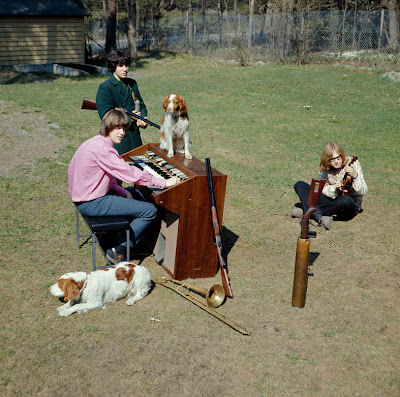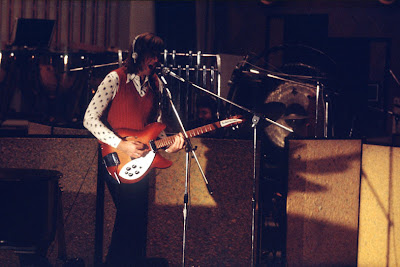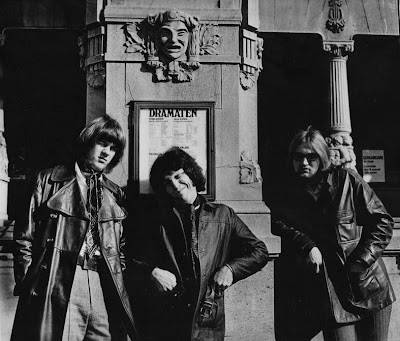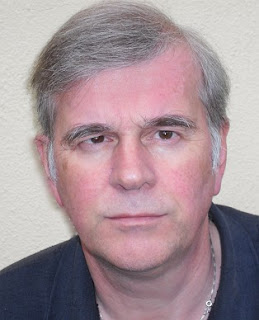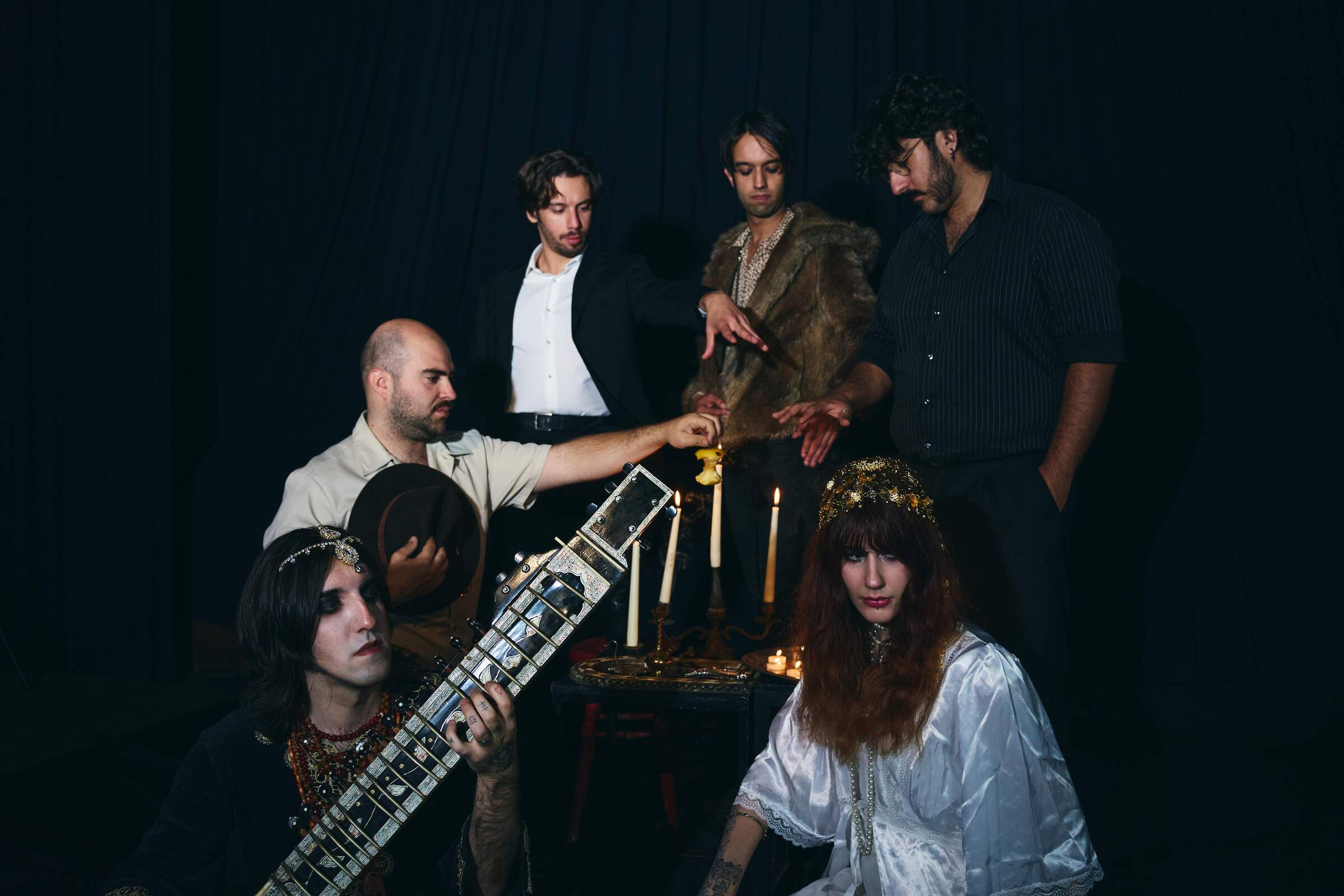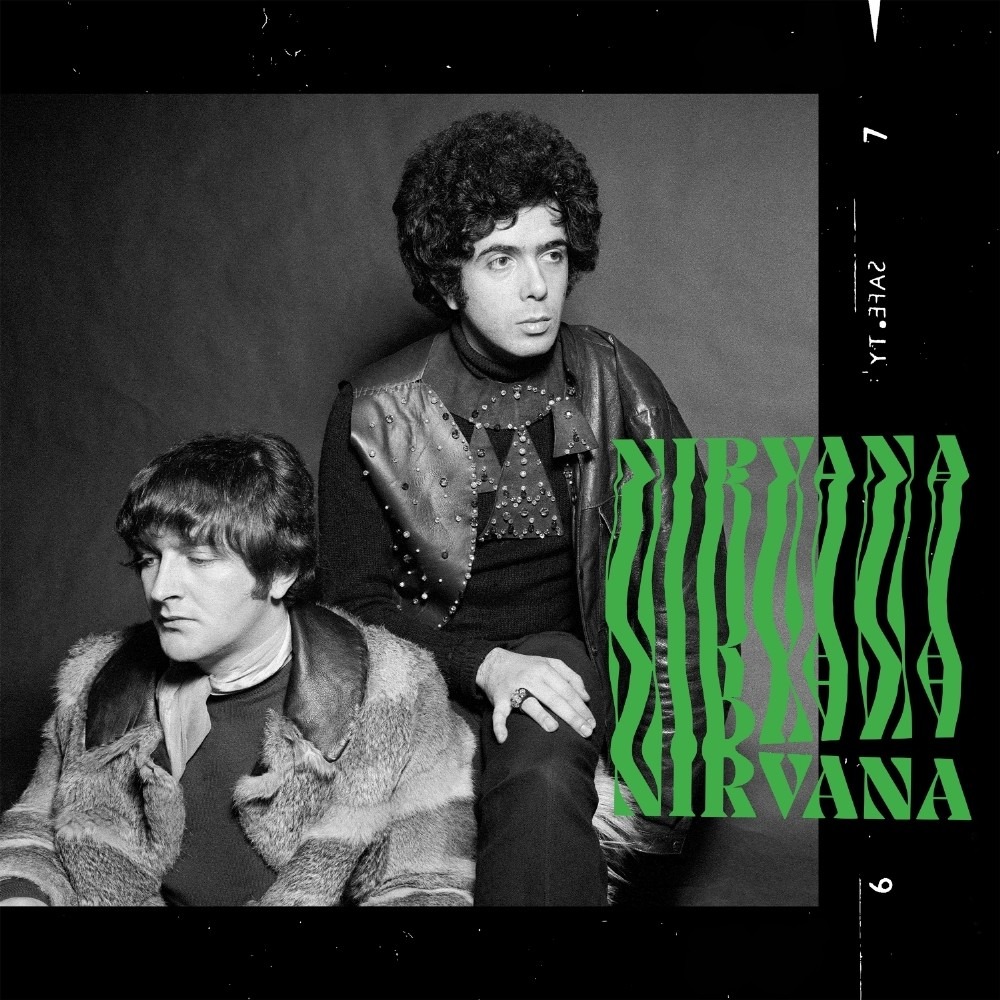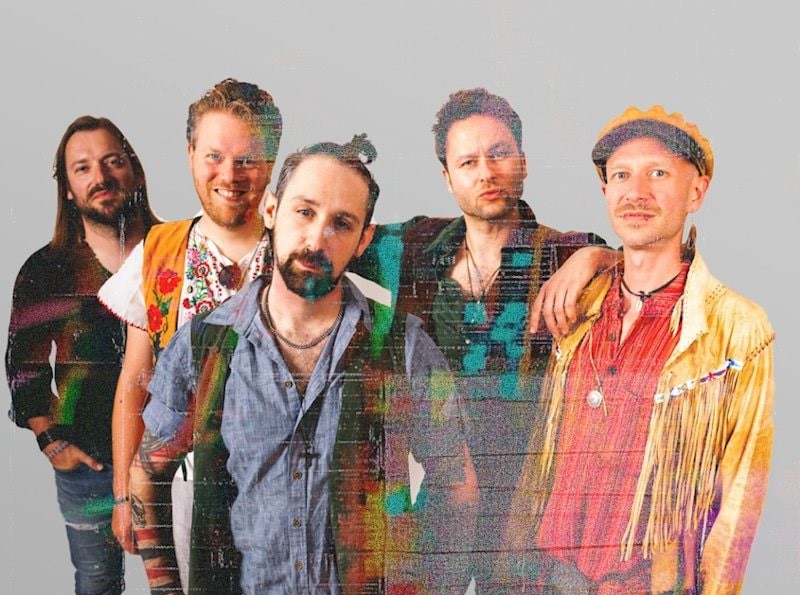Rain interview with Åsmund Feidje
Interview
1. Thank you very much for taking your time! Let’s begin with your childhood and teen years. Where did you grow up and what were some of your influences at the time?
I grew up in a little village 50 km north of Lillehammer called Fåvang. Now the place is known for its Olympic down hill course from 1994, Kvitfjell. The alpine World Cup is arranged there every year, but when I grew up, the alpine circus was something exotic that happened far away! We went skiing, of course, but that was mainly our way of transportation in the wintertime. That is why I went skiing through the Kvitfjell area with my violin in the rucksack to have my lessons from the age of seven. I was devoted to classical music in my early years, although we had jukeboxes in a couple of cafés where we could listen to Elvis or The Shadows and stuff like that. The Norwegian countryside was not as urban as today, and the new trends needed some time to reach us, if it did at all. So I mostly listened to classical music and the great violin virtuosos like Menhuin and Oistrakh.
But in 1964 I moved to Oslo to go to high school, and that was a big turning point in my life. One of my classmates, who actually played in a band, introduced me to The Beatles – quite late, as you can see – and showed me a few chords on the guitar. And in just a few minutes I could play my first Beatles song: All my loving! In my childhood I had no one to play with, and playing violin all by myself was very boring compared to singing and playing the guitar. I tried to keep the violin going by joining a string orchestra for a short period of time, but I had to make a choice between that and the theatre group at my school. Right from my childhood, theatre had actually been my biggest interest. I always thought I was going to be an actor, music was just a hobby! But from now on I practiced the guitar all the time, and was really getting into music.
2. Were you in any bands as a teenager, before forming Rain? Any releases from then, perhaps?
It all started with a mixture of humor, parody and primitive pop music, when my best friend from class, Willy Aagre, and I should create some entertainment at a school party. The duo continued to develop this concept, and we had a few jobs at different occasions. But the urge to play in a real band was growing, so we tried to get others to join us. In 1966 we played a few gigs here and there, but the line up always changed. In the summer of 1966, the group had three members, playing bass and guitars and singing, but we still missed a drummer.
3. Rain formed in 1967. Tell me how did you guys come together and what are some of the early memories from sessions you had together?
Although we used different group names, I think that the beginning of RAIN was when we finally found the drummer!
We were all going to graduate from high school in the spring of 1967, and in Oslo we had a club where all the graduates from the whole city could meet once a week throughout the school year.
This is where we happened to meet Carl Jørgen Kiønig in the autumn of 1966. We asked him if he knew a drummer, and it turned out that he played drums himself! We invited him to join us, of course, and luckily for us he was not in a band just at the moment. He had been playing in a couple of decent groups, and he was a bit skeptical towards these first timers. But we met and played together, and he accepted to give it a try.
Finally we had a band, called Common VI D, a name we found on a crate of oranges when we worked on the pier. The band consisted of Carl Jørgen on drums, Willy on bass, me on lead guitar, and Tore Grue on 12-string rhythm guitar and harmonica.
This band gradually got together a repertoire consisting of cover versions of songs by Beatles, Who, Kinks, Stones etc., and we also began to write some songs ourselves. We started to get jobs, and were quite active during the spring of 1967, developing into an average, but not very original band.
We were looking for new directions, perhaps rhythm and blues or soul music? We attended a fantastic Stax concert in Oslo, with Booker T and the MGs backing some of the finest soul singers. A lot of other famous groups also visited Oslo in this period.
But Tore Grue quit the group during the summer, and we had to search for a replacement.
We asked Knut Heljar Hagen to join the group. We knew him from my classmate’s band, you know the one who introduced me to the guitar. Knut Heljar had played bass in different bands, but with us he wanted to play the organ. He was much more experienced than the rest of us, but he was willing to be a part of the group if we worked really hard. And so we did, both musically and with different odd jobs to earn money to buy better equipment.
The big change musically came when Carl Jørgen discovered the Vanilla Fudge, and they opened our eyes and ears to new possibilities in music. We learned extremely much from copying most of the songs from their first LP, and when we played “You keep me hangin´ on” for an audience for the first time, our band was recognized in a quite different way. We then changed our name to RAIN, because we found it more suitable to our new style.
And then, after Christmas, Willy told us he wanted to quit, which came as a shock to all of us. But he would stay until the summer, continuing to play and work on our new style, giving us a chance to find a new bass player.
When the summer came, we decided not to replace him. We wanted to continue as a trio, Knut Heljar would play the bass with the organ pedals. So we had to work hard during the summer, all three of us had to develop our skills and become better musicians if the trio format should work.
We lived and worked together the whole summer of 1968, no politics, just music! At night colleagues came to visit us to have a jam and a party. And the next day we continued to work. When we started to do gigs again, we were among the best bands in Norway.
After a couple of months we were asked by the National Theatre to participate in a rock musical. We discussed this a lot in the band, but we decided to take the job.
The musical was a huge success, and after full houses the whole spring season 1969, we were engaged to play in a Swedish production of the same musical in the autumn. And as soon as we came back, the National Theatre wanted to take up their production again.
We had to make a choice whether to struggle on for international acclaim as a rock band, or take the opportunity given to us by the theatre. Norway was too small to provide a market for our kind of music, we had very few concert venues for rock music at that time, and no record company would produce our very ambitious LP project.
Still on tour in Sweden, we were asked to write the music for the TV film Rivalen, and with many performances ahead of us at the National Theatre, we decided to stay in the theatre business for the time being. We were hoping to combine the two worlds and do some concerts in between, but unfortunately it proved very difficult to realize.
The theater has given us a decent income and an interesting life, but RAIN as a rock band could only exist sporadically after this.
4. What is the main concept behind Rain?
The music developed from the style of the Vanilla Fudge, from whom we learned to rearrange popular songs in our own way, instead of covering them. We wrote some stuff ourselves, too, but we had this idea that when the audience knew the song, they would be able to follow what we did and accept it easier than when the material was completely new to them.
We wanted to be a rock band, but had this urge to exceed the limits, both musically and technically. All three of us had knowledge of notation and had played other instruments, violin, as you know, flute and trumpet. I started to use my violin with a contact microphone, which was very provocative with the audience. This was before Flock, you know!
We worked quite a lot with dynamics, irregular time signatures and quotes from new and classical music, for instance we played Spring Rounds from Stravinsky’s The Rite of Spring. We also did long sequences of free improvisation on our concerts. But mainly we made very complex and difficult arrangements that required a lot of practice. Our inspiration was taken from all kinds of music.
We also wanted to turn our concerts into a total experience; we had a spectacular psychedelic lightshow covering the whole stage, not only the back wall. Knut Bry, now an internationally acclaimed photographer, was the master of this lighting. He used a slide projector of the old sort, with no magazine, where he put a frame with fluids that started to boil. With a pipette he could drop droplets of colors in the frame at the exact precise moment, causing the whole stage to explode at the peaks of the music. He was like a member of the band, knowing our repertoire to the smallest detail.
We also used incense to make the experience even more complete. And for a short period we experimented with “surround” sound. We put speakers behind the audience, where we played different sounds or music samples from tape.
5. In 1970 you released an EP. The EP is very rare because it was released only as a soundtrack for the movie RIVALEN by Hans Dahlin / Klaus Hagerup. What are some of the strongest memories from producing and recording this EP? (at what studio did you record it?)
Yes, the EP, or Maxi single, is very rare, not because it is from a movie, but because the record company did nothing to promote it. Nobody knew it was released.
The recording session was great and lasted for two days. We worked in the Arne Bendiksen Studio, probably on 8 tracks, with Jan Erik Kongshaug as a technician. He is quite famous for his work with Manfred Eicher on the ECM label.
We did not have that much experience, but collaborating with him made everything just smooth, and we felt secure that the result would sound good.
The soundtrack consists of different kinds of music to fit the movie. The three songs were in our style, but not too avant-garde compared to what we used to play live. We actually never performed any of the Rivalen songs live, but we got the opportunity to play with a big band in Trondheim a month before the recording session, so we tried out Whine and Wail, the big band instrumental, with them. It was a wonderful feeling to play the guitar solo with all that power support!
In the studio we also did it live with no overdubs, it was a fantastic experience, playing with some of the most outstanding Norwegian jazz musicians. Jan Garbarek was among them, but Erik Andresen played the saxophone solo.
One of the songs had an arrangement for flute, horns and strings, and it was most satisfying to play with that little orchestra, experiencing that our arrangements were working. We wrote all the arrangements ourselves, or basically Knut Heljar in the beginning.
How many copies were made on Triola?
I really do not know, because we never received any statements from them, or any royalties. We read in the newspaper that the record was sold to Mexico during the Midem Festival in Cannes, but that is all we know.
What can you say about the cover artwork?
Jan Scwarzott, who was the photographer at the National Theatre, designed the cover. The pictures were taken at the Henie Onstad Art Centre, which was a very important institution for all modern art, not only visual, but also contemporary music, theatre, performances and dance.
The hanging man is a symbolic expression for the content of the film, but it is also a direct illustration of a line of text in the song “Ikke vær redd, far”. The Norwegian Broadcasting Company found this text so provocative, that they put a warning on the record in their library. It was only to be played under certain circumstances, and this made it even more underground.
6. Would you like to tell me more about Rivalen project?
Rivalen was the first drama production in color made by the Norwegian Broadcasting Company, as well as our first assignment as composers.
We never intended to release any of the Rivalen material, but the boss at Triola heard some of it in the studio during the session, and he wanted to make this record, so we thought it could be a start! However, we never managed to talk him into making the LP that we wanted to record. And we would definitely not record the LP that he wanted us to make!
7. Rain became associated with The National Theatre in Oslo, Norway, and you continued your career there as a composer of musical scores for the stage. Would you like to tell me more about it…
Yes, the band continued to perform at the National Theatre after we finished the Rivalen project. Our first musical continued another year, and at the same time we started to rehearse a new one, which also became a success.
After that we began to participate individually in different productions. Knut Heljar went away for a year as part of the group who started the Hålogaland Theatre in Tromsø.
Carl Jørgen played in a production where Terje Rypdal wrote the music, and I did different things, like playing the banjo in Hanns Eisler’s Die Mutter, or flamenco guitar in Lorca’s Bodas de sangre.
We worked together again with Shakespeare’s The taming of the Shrew, where we composed and performed music in a renaissance kind of Rain.
At the same time we did a Radio play of John Dickson Carr’s The burning Court, which led to more offers to compose for dramatic productions. Even though we performed ourselves in many of these productions, we also wrote for other instruments, and gradually we played less and composed more.
The last big production we made where we performed ourselves was a musical called Camp in 1977. The text was by Klaus Hagerup’s brother, Helge, and we wrote the music. The play was about a female rock singer with a history like Janis Joplin, so we made music that evolved throughout her career, and towards the end it grew to be nearly like the style of Rain.
We made a recording of this music in the studio at the National Theatre, with Terje Rypdal as a producer. The actor Anne Marie Ottersen, who played the role of Camp, was singing. This recording was released by CBS, but they were no better than Triola, when it came to promotion and statements.
I was permanently employed as a musician at the National Theatre from 1973, and gradually I started to compose for the stage on my own. I wrote my first ballet in 1978, and I had composed a lot of different things when I in 1990 took a year off to study composition with Boguslaw Schaeffer in Salzburg. After that I have only been working as a composer.
Have you been performing any concerts as Rain, perhaps?
In 1974 we managed to give some concerts with new material in Oslo, for instance at the Henie Onstad Art Center, and we made a quite good live recording of some of it.
8. In 1971/72, you played electric bass and electric violin in Terje Rypdal Ensemble and you also worked with Jan Garbarek. Tell me more about that experience!
During the year when Knut Heljar was away, I played with Terje Rypdal in the first group bearing his own name. He was originally a rock guitarist, known from the Vanguards. He started Dream in 1967, a band with more ambition musically, which also inspired Rain a lot. In 1969 Dream disappeared, and Terje was part of the Jan Garbarek Quartet. These people were prominent jazz musicians and big heroes.
I admit that I was a bit nervous when I started to practice with Terje Rypdal Ensemble. It was very different to play with jazz musicians, and I was not a very experienced bass player, but Terje and I had pretty much the same background.
We understood each other, and a lot of his compositions were built on bass riffs, which gave me a concrete task to solve.
And thanks to all the efforts in different directions with Rain, I was able to create a bass style that worked with Jon Christensen. I really never thought I would ever form a rhythm section with that drummer!
But jazz music was undergoing quite a change in those days. Miles Davis, Weather Report, Mahavishnu Orchestra, Herbie Hancock and lots of others, opened up for cooperation across genre boundaries, making a musician like me a creative member of the group.
It was a great experience and I absolutely loved to be in the group, the other members were Brynjulf Blix on keyboards, and for a short while, Terje’s wife Inger Lise doing vocals.
In the more lyrical parts of our concerts, I played the violin, often with Terje playing the flute.
But, again I had had to make my choice, and I returned to the theatre. A few years later Jan Garbarek wrote the music for a play, and he performed himself with me and Jon Christensen as a trio, Carl Jørgen also alternated with Jon in this performance.
I also played guitar in another of Jan Garbarek’s efforts for the stage, also this time with him and Jon. That is all, but playing with musicians like these guys is an unforgettable experience anyway!
In the theatre I got the opportunity to work with a lot of great musicians, among them my favorite Norwegian composer, Alfred Janson, who is also a wonderful jazz musician.
9. In the late 70’s and early 80’s you were part of Octoband…
Yes, after the production of Camp at the National Theatre, Rain was not performing any more. Carl Jørgen started his studies in the State Academy to be a director, and Knut Heljar and I were working as composers and musicians individually. Sometimes, when possible, all three of us composed music for radio plays together, maybe once a year.
Composition grew more and more important to me, and I wanted to get into contemporary music.
Octoband was started by composers and musicians with different backgrounds, but with a common whish to explore new types of musical expression. We wanted to create a forum to realize each other’s projects. Octoband played concerts, ballet music, multimedia and even stage music for Shakespeare’s As you like it. We also used guest instrumentalists if we needed to, the group was very flexible.
We recorded an LP in 1984 with compositions by three of the members: Guttorm Kittelsen, Rob Waring and myself, but as usual, the recording was kept secret, because the recording company was being restructured, and when the record finally came out, it was under the utmost silence.
10. Would you like to mention a few of your works as a composer?
I have composed mainly for the stage, about 150 productions. I will mention the music for Ibsen’s plays in the Radio Theatre, especially Peer Gynt, Brand and Emperor and Galilean. The whole Ibsen series is released on CDs, and my music can be heard on half of them!
I was the first Norwegian composer to be programmed on the main stage of the new opera in Oslo, with the ballet Access by choreographer Sølvi Edvardsen.
We also did a ballet together called Beyond Borders, produced in New Delhi with Indian and Norwegian top dancers.
At the Finnish Opera in Helsinki, I did a ballet called Hallayö, choreographed by Jorma Uotinen. This music was released on CD, but the record company went bankrupt and has no distribution.
There you have my history with record companies! Let’s hope Shadoks is different!
I have written a few pieces of chamber music, I will mention one of them:
Contrabbacchus per contrabbasso solo, performed all over Europe and recorded beautifully by Bjørn Ianke on his CD The Contemporary Solo Double Bass II, on the Simax label, which is yet not bankrupt!
11. Shadoks will release old Rain recordings and I would like to stop here and ask you about them (please share the story how did you record them, what gear did you guys use, cover artwork, why was it not released etc.
As I mentioned earlier, we did not intend to release any of these recordings on disc. They were made for different other purposes, like films or TV programs. But all three sessions were done in the Arne Bendiksen Studio, with Jan Erik Kongshaug and Nils B. Kvam as technicians, therefore the quality of the recordings are quite good, and I think it works as a coherent product when we now put it together on an LP.
So, even though we never got the opportunity to record the LP we dreamed of, the release from Shadoks Music still gives you a pretty good idea about what kind of band Rain was.
The cover artwork is new. We sent all the pictures we could find from once upon a time to Thomas Hartlage at Shadoks, and I love the cover he made out of it! He even managed to use the old EP cover as an inner sleeve!
The oldest recordings are A Day in the Life and the free improvisation called Tapha. Tapha is too long to be on the LP, but will come as a bonus track on the CD. These were recorded on a 4-track tape recorder. You can hear that we use an Eminent organ on these tracks, Knut Heljar bought the Hammond B3 after our tour in Sweden in1969. On all the other recordings we use the B3, and as far as I can remember, the studio was then upgraded to 8 tracks!
I played at first a Fender Telecaster, but fell in love with the Rickenbacker, so I suppose I use that on all the tracks where Knut Heljar plays the B3.
I rediscovered the Telecaster later, and I started to use both guitars for different purposes. I used Marshall amplifiers and speakers and a Binson Echorec 2. And fuzz, wah wah and volume pedals. I also played a Fender Precision Bass guitar.
Carl Jørgen played Ludwig drums and Zildjan cymbals.
He also invented some special effects like blowing into the floor tom through a rubber hose too achieve a timpani glissando! He used a set of Premier Tubular Bells and lots of other percussion instruments.
12. Thank you very much, Åsmund! Would you like to share anything else with the readers of It’s Psychedelic Baby Magazine?
Yes, I actually would. I have to tell you that Knut Heljar died from cancer already in 1985, only 35 years old. We still miss him.
But Carl Jørgen and I have continued working together. He is now one of the leading theater directors of Norway, and I very often compose the music for his productions. We have made more than 40 performances together with separate roles.
When he does film, TV or Radio Plays, we often compose the music together, still using the name Rain.
In Germany there exist a couple of DVD releases of a movie and a TV series by Carl Jørgen, called Rache für meine Tochter and Justitia – Blinde Göttin, based on books by Anne Holt. In these productions we composed the music together, as Rain. You can get those DVDs at Amazon.de.
Finally, I would just encourage your readers to get hold of our new Shadoks release and enjoy!
Check Shadoks Music website for further information about upcoming release of Rain LP.
Interview made by Klemen Breznikar / 2012
© Copyright http://psychedelicbaby.blogspot.com/ 2012

